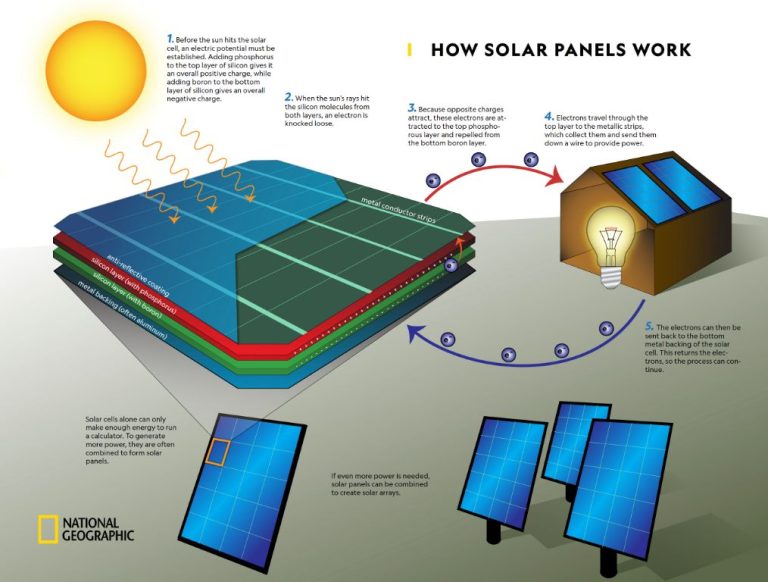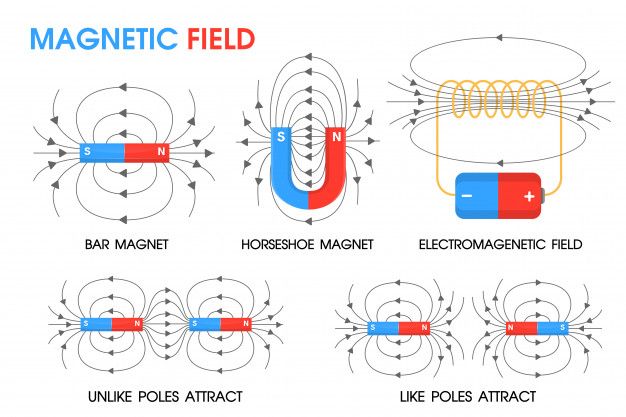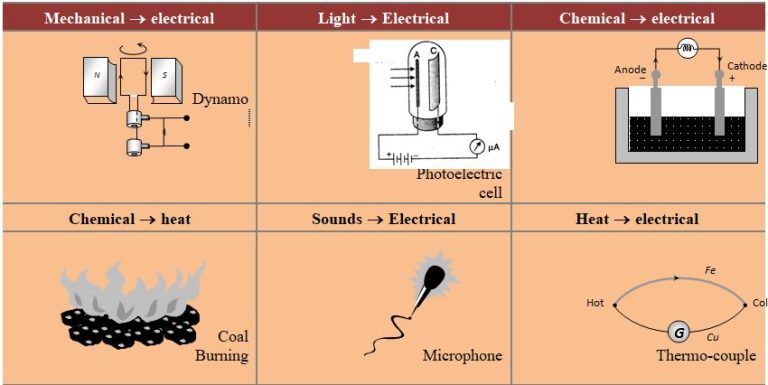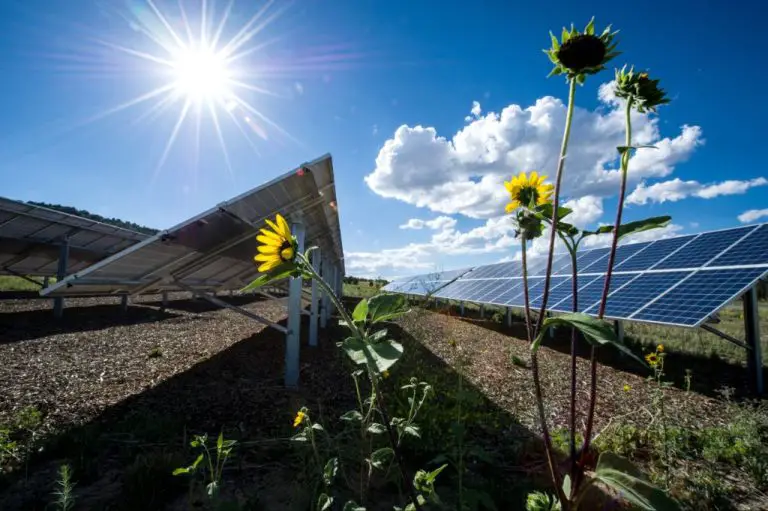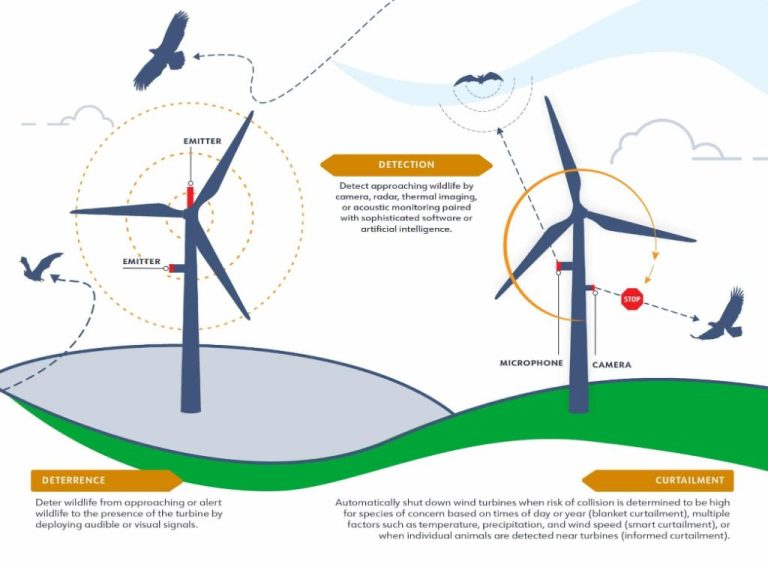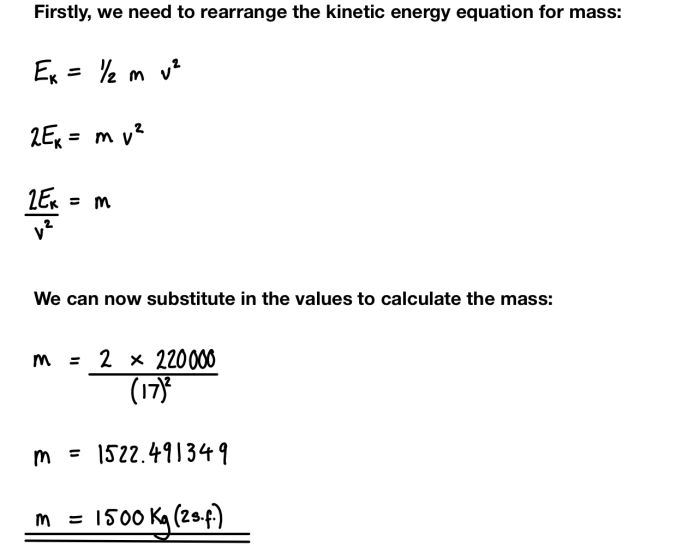Why Is It Called Greenhouse Effect?
The greenhouse effect refers to the process by which certain gases in the Earth’s atmosphere trap infrared radiation from the sun. This radiation gets absorbed by the atmosphere, causing it to warm. The greenhouse effect is a natural process that makes the Earth habitable for life as we know it. Without it, the average surface temperature on our planet would be about -18°C (0°F) rather than the comfortable 15°C (59°F) that it is today.
But why is this natural warming phenomenon called the “greenhouse effect”? The comparison comes from the similarity between the way certain gases trap heat in the atmosphere and the way the glass roof and walls of a greenhouse retain heat inside its structure. Just as the glass of a greenhouse allows sunlight to enter but prevents some of the heat from escaping, greenhouse gases in the atmosphere allow the sun’s radiation to pass through but absorb some of the infrared radiation emitted back from the Earth’s surface. This keeps the natural level of heat in the atmosphere higher than it would be otherwise, creating a greenhouse-like warming effect on the planet.
History of the Term
The term “greenhouse effect” was first coined by Joseph Fourier in 1824 to describe the way solar radiation from the sun penetrates the atmosphere and warms Earth’s surface, while some of the infrared radiation from the warmed surface is retained in the atmosphere. The word greenhouse is used as an analogy to an actual greenhouse, which traps heat inside a glass structure to grow plants in colder climates.
Fourier recognized that the atmosphere was responsible for maintaining warmer temperatures on Earth compared to a planet without an atmosphere. He made an early calculation and determined that Earth would be about 33°C colder on average if it did not have an atmosphere.
The greenhouse effect concept was further developed in 1896 by Swedish scientist Svante Arrhenius. He calculated the absorption of infrared radiation by atmospheric CO2 and water vapor and was the first to theorize that increasing CO2 emissions from human industry could lead to global warming through the greenhouse effect.
How a Greenhouse Works
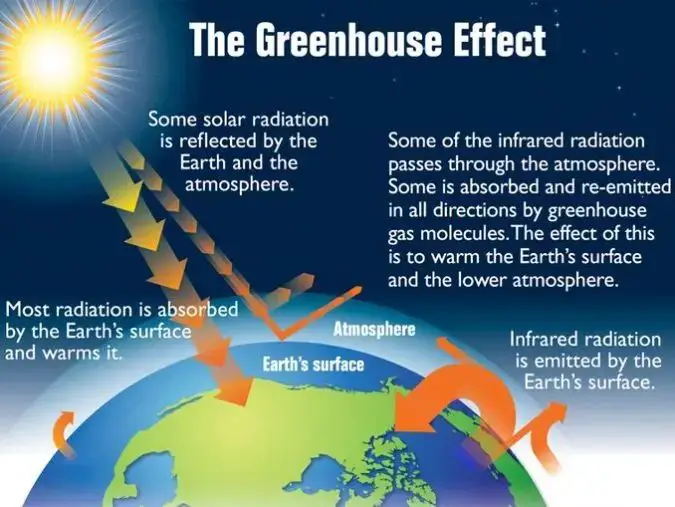
A greenhouse is a structure made of glass or plastic walls and roof that is designed to trap heat from the sun. The glass allows sunlight to enter the greenhouse, which heats up objects inside. This warmth gets trapped inside the greenhouse as the glass prevents heated air from escaping. The greenhouse glass acts like a thermal blanket, allowing short wavelength solar radiation in, but blocking long wavelength infrared radiation from escaping.
Greenhouses stay warmer than the external environment because the glass reduces airflow and retains heat. The inside temperature remains ideal for growing plants, typically around 10-30°F warmer than the outside. The glass roof and walls prevent convection currents from carrying heat away. The greenhouse effect is maximized on calm, sunny days when the greenhouse can heat up like an oven.
The greenhouse mechanism relies on shortwave radiation from the sun easily penetrating the glass, while the longwave infrared radiation emitted by the warmed greenhouse interior is mostly unable to pass through the glass and is trapped inside. This one-way flow of energy causes temperatures under glass to substantially exceed the external temperature.
The Atmosphere Acts Like a Greenhouse
The atmosphere acts like a greenhouse by trapping heat from the sun through a process called the greenhouse effect. Certain gases in the atmosphere, known as greenhouse gases, play an important role in this process.
As sunlight reaches Earth’s surface, the ground absorbs some of this solar energy and warms up. The ground then radiates heat back up toward space. Greenhouse gases like carbon dioxide (CO2), methane (CH4), and water vapor (H2O) essentially trap some of this heat in the atmosphere before it can escape into space.
These greenhouse gas molecules absorb infrared radiation emitted by the Earth’s surface. As they re-radiate the heat in all directions, some of it is directed back down to the surface. This process allows enough warmth to be retained on Earth to support life as we know it.
Without the natural greenhouse effect, scientists estimate that the average temperature on Earth would be around 0°F (-18°C) instead of the present 59°F (15°C). Greenhouse gases keep our planet livably warm by preventing too much heat from escaping into space.
The Greenhouse Effect on Temperature
The greenhouse effect is crucial for life on Earth. Simply put, greenhouse gases like carbon dioxide, methane, and water vapor trap heat from the sun in the atmosphere, regulating the planet’s temperature. Without the natural greenhouse effect, the average temperature on Earth would be about 0°F (-18°C) instead of a comfortable 60°F (15°C). This greenhouse warming brings the temperatures on our life-supporting planet above freezing.
However, human activities like burning fossil fuels have increased the amount of greenhouse gases in the atmosphere significantly. As these greenhouse gas concentrations rise, more heat is retained, rather than escaping back into space. The result is a warming of the atmosphere and overall climate system known as global warming. Since the late 19th century, the Earth’s average temperature has increased by about 1.5°F (0.8°C). This may not sound like much, but even slight changes in the delicate balance of the climate can create big impacts.
This human-caused increase in greenhouse gases is intensifying the greenhouse effect and heating up the planet at an unprecedented pace. Higher concentrations of greenhouse gases have led to more absorption of infrared radiation emitted from Earth’s surface. The extra trapped heat disrupts weather, alters precipitation patterns, melts glaciers, raises sea levels, and leads to more extreme weather events. Many of these climate change impacts are already being felt across the globe. If greenhouse gas emissions continue unabated, scientists project severe and damaging climate change effects later this century and beyond.
Too Much of a Good Thing
The greenhouse effect is essential for life on Earth. It helps regulate our planet’s temperature and makes conditions livable. However, problems arise when greenhouse gas concentrations become too high. Just like a real greenhouse can become dangerously hot on a sunny day if it lacks sufficient ventilation, the Earth’s atmosphere is warming to dangerous levels due to excessive greenhouse gases.
Greenhouse gases like carbon dioxide, methane, and water vapor trap heat from the Sun that would otherwise escape into space. As greenhouse gas levels increase due to human activities like burning fossil fuels, more heat gets trapped in the atmosphere. Over time, all this extra trapped heat causes global temperatures to rise.
Since the Industrial Revolution began in the 1800s, atmospheric carbon dioxide levels have increased by over 40%. Methane concentrations have risen by 150%. This dramatic rise in greenhouse gases far exceeds what has occurred naturally over thousands of years. The resulting global warming is altering weather patterns and causing sea levels to rise, with devastating impacts on ecosystems and communities worldwide. While the greenhouse effect is necessary in moderation, human-caused increases are now pushing Earth’s climate out of balance.
Natural vs Human Causes
The greenhouse effect is a natural process that regulates the earth’s temperature. Some greenhouse gases, like water vapor, carbon dioxide, and methane, occur naturally and help keep the planet habitable by trapping heat from the sun. However, human activity since the industrial revolution has increased greenhouse gas emissions dramatically, amplifying the greenhouse effect beyond natural levels.
Water vapor is the most abundant greenhouse gas. Most water vapor in the atmosphere comes from natural processes like evaporation. Other greenhouse gases like carbon dioxide (CO2) and methane have natural sources as well. For example, volcanic eruptions release CO2, and methane is emitted by wetlands.
While greenhouse gases have natural sources, human activity has contributed to substantial increases in atmospheric CO2, methane, and other greenhouse gases. Burning fossil fuels is the primary way humans emit greenhouse gases. Since the industrial revolution began in the 1800s, CO2 levels have skyrocketed due to the burning of coal, oil, and gas. Humans also produce greenhouse gases from agriculture, deforestation, and industrial practices.
In conclusion, the greenhouse effect is a natural process, but human activity has dramatically increased the concentration of greenhouse gases like CO2 in the atmosphere. This human-caused amplification of the greenhouse effect is responsible for most of the climate change observed in modern times.
Mitigating Climate Change
As the greenhouse effect continues to intensify due to human activities like burning fossil fuels, deforestation, and industrial processes, many are calling for actions to reduce our climate impact moving forward. There are several key ways we can mitigate further changes from the greenhouse effect:
Transition to Clean Energy Sources: Shifting from reliance on fossil fuels like coal, oil and natural gas to clean, renewable sources of energy like solar, wind and geothermal can significantly reduce greenhouse gas emissions. Many countries are ramping up investments in renewable energy infrastructure and companies are developing more efficient technologies to enable this transition.
Reforestation and Afforestation: Planting new forests where there were none before (afforestation) and replanting forests that have been cut down or damaged (reforestation) helps remove carbon dioxide from the atmosphere through photosynthesis. Tree planting efforts are underway in many regions to restore forests lost to development or wildfires.
Sustainable Agriculture and Land Use Practices: Adopting techniques like no-till farming, crop rotations, organic fertilizers and integrated pest management reduces agriculture’s carbon footprint. Protecting grasslands and wetlands also preserves important carbon sinks.
Energy Efficiency and Conservation: Simple actions like improving building insulation, switching to LED lights, driving fuel efficient cars and reducing waste conserve energy and limit emissions. Governments can promote efficiency through building codes, fuel economy standards and appliance efficiency regulations.
Carbon Capture and Storage: Emerging technologies can capture CO2 directly from the air or from power plant flue emissions, then store it underground to prevent its release. More research and infrastructure development is needed to scale up carbon capture and storage.
While individuals can make a difference through their everyday choices, ultimately systemic change is needed to curb the greenhouse effect and its climate impacts. With commitment and effort across all sectors of society, we can transition to an economy that sustains both human development and the planet.
The Future
As the greenhouse effect continues to intensify due to human activities, scientists project that the average global temperature will continue to rise in the coming decades. Based on current trends and climate models, here are some projections for the future:
– Global temperatures could rise by 2-6°C by the end of the century if greenhouse gas emissions continue unchecked. This level of warming could lead to catastrophic impacts.
– Sea levels are projected to rise by 0.3-2 meters by 2100 due to melting ice sheets and the thermal expansion of warmer ocean water. This could flood coastal cities and islands.
– More frequent and intense heat waves, droughts, wildfires, storms, and other extreme weather events are expected as the climate warms further.
– Species extinctions are projected to accelerate as habitats change faster than animals and plants can adapt. Up to one third of all species could face extinction.
– Fresh water supplies will become more strained as glaciers melt and precipitation patterns shift. Millions more people could face water scarcity.
– Major shifts in agriculture and food production are likely, threatening food security, as crops have to adapt to new climate conditions.
– Economic costs will escalate as more infrastructure is damaged by climate disasters and entire industries need to transform to adapt to a changing climate.
The future impacts depend on how quickly and effectively humanity can curb greenhouse gas emissions and remove carbon from the atmosphere. While the projections may seem bleak, there is still a window of opportunity to mitigate the worst effects of climate change if we act urgently and ambitiously.
Conclusion
In conclusion, the term “greenhouse effect” is an apt description for the phenomenon of gases like carbon dioxide and methane trapping heat in the atmosphere. Just like the glass walls of an actual greenhouse allow sunlight to enter but prevent heat from escaping, greenhouse gases allow incoming solar radiation to reach the Earth’s surface but inhibit the escape of infrared radiation back into space. This causes a net increase in surface temperatures, like the warmer conditions inside a greenhouse compared to outside. Although the greenhouse effect is natural and necessary for life, human activities like burning fossil fuels have exponentially increased greenhouse gas levels and amplified the greenhouse effect. This enhanced greenhouse effect is causing global temperatures to rise faster than species and ecosystems can adapt. While mitigating climate change will require effort across many fronts, the “greenhouse” analogy helps explain the basic mechanism of how greenhouse gases affect the Earth’s energy budget. The term serves as an important reminder of humanity’s role in influencing this natural phenomenon to the point of disrupting the global climate.

